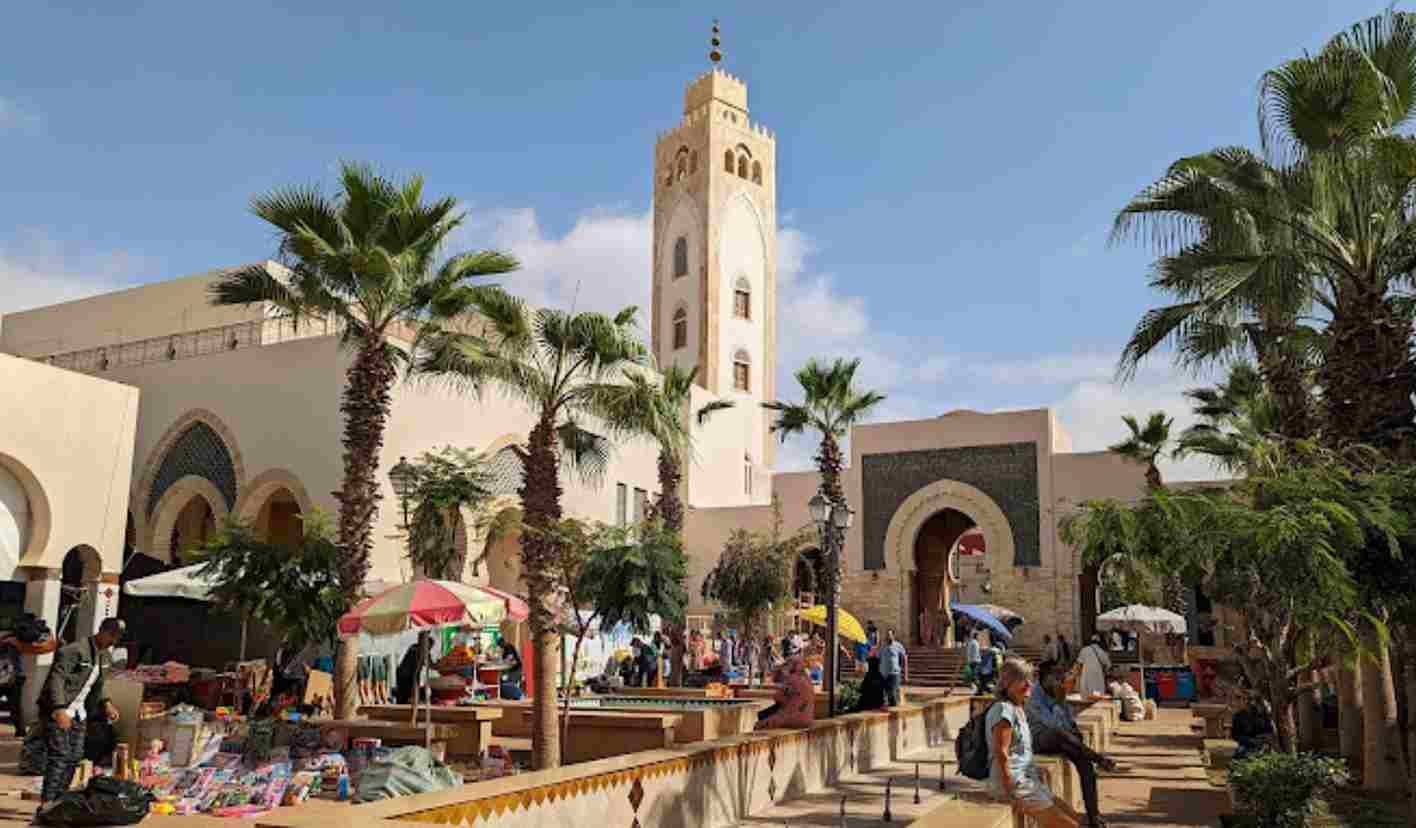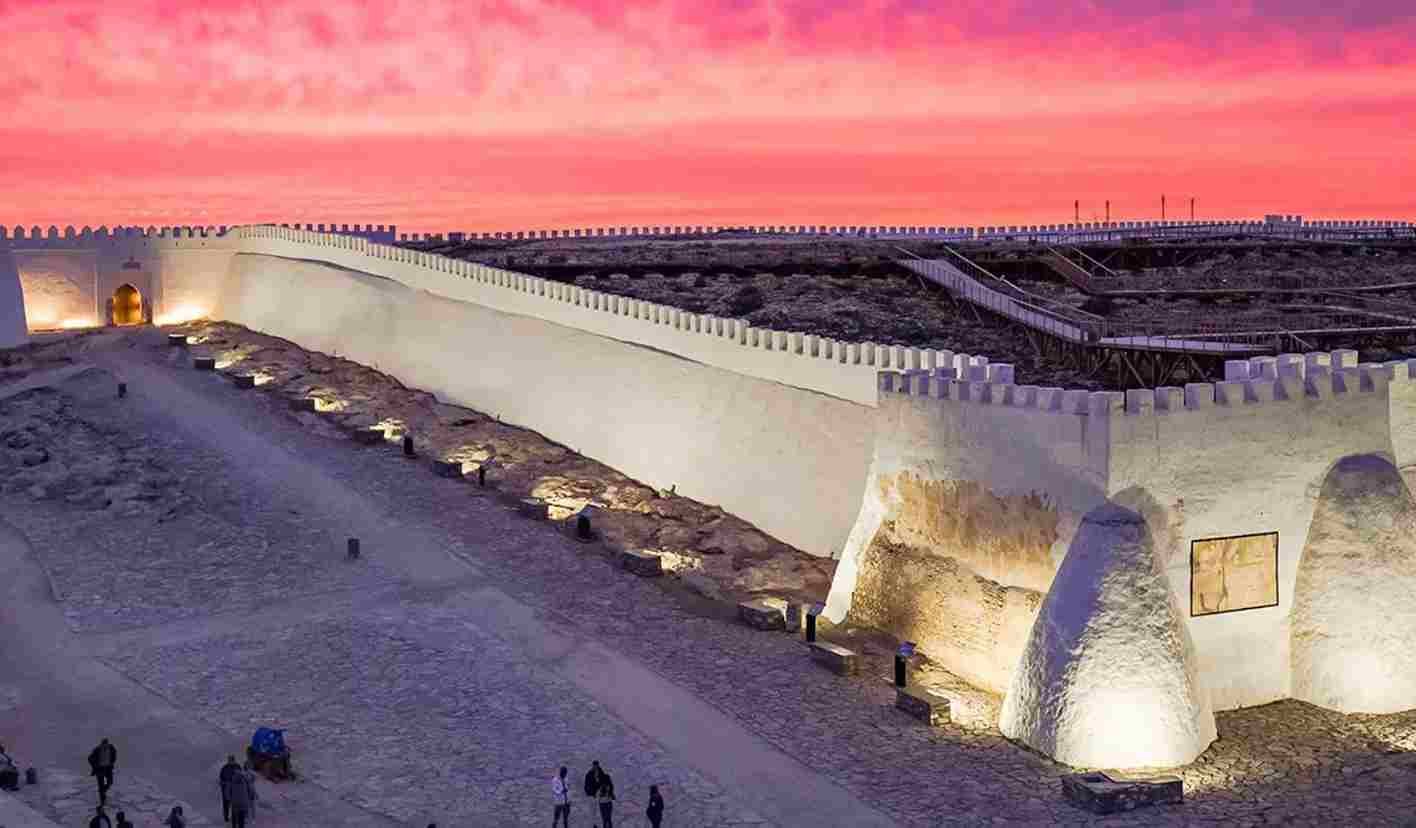In the bustling city of Agadir, where modernity meets tradition, Souk Al Had stands as a vibrant testament to Morocco’s rich cultural heritage. This sprawling marketplace, one of the largest in the region, is more than just a shopping destination; it’s a sensory journey through the sights, sounds, and flavors of Moroccan life. Whether you’re a first-time visitor or a seasoned traveler, Souk Al Had offers an authentic experience that captures the essence of Agadir and the broader Souss-Massa region.
For centuries, Guelmim has been a key stop on the ancient trans-Saharan trade routes. Caravans laden with salt, gold, and other goods would pass through here, with camels playing a central role in these journeys. Today, the market continues to honor this legacy, serving as a vital link between the past and present.
The History and Significance of Souk Al Had
Souk Al Had, named after the Arabic word for “Sunday,” was historically a weekly market held on Sundays, where traders and locals from surrounding areas would gather to buy and sell goods. Over time, the market expanded and evolved into a daily event, becoming a central hub for commerce and social interaction in Agadir.
The souk was rebuilt after the devastating earthquake of 1960 that struck Agadir, and it has since grown to become one of the largest and most popular markets in Morocco. Today, Souk Al Had covers a vast area of over 13 hectares, with more than 6,000 stalls offering a wide variety of goods, from fresh produce and spices to handcrafted souvenirs and traditional clothing.
What to Expect at Souk Al Had
Stepping into Souk Al Had is like entering a vibrant maze of colors, scents, and sounds. The market is organized into different sections, each dedicated to specific types of goods, making it easy to navigate despite its size.
Fresh Produce and Spices: One of the most enticing sections of Souk Al Had is the area dedicated to fresh produce and spices. Here, you’ll find an array of fruits and vegetables that showcase the agricultural bounty of the Souss-Massa region. The spice stalls are particularly captivating, with their pyramids of colorful powders and aromatic blends, offering everything from saffron to ras el hanout, a quintessential Moroccan spice mix.
Handcrafted Goods and Souvenirs: Souk Al Had is also a treasure trove of traditional Moroccan crafts. Visitors can browse through stalls selling beautifully handcrafted rugs, pottery, leather goods, and jewelry. These items make for unique souvenirs that carry the spirit of Moroccan craftsmanship. Bargaining is a common practice, and it’s part of the experience, so don’t hesitate to haggle with the vendors to get the best deal.
Traditional Clothing and Textiles: For those interested in Moroccan fashion, the souk offers a wide selection of traditional clothing, including djellabas, kaftans, and scarves. The textile section is equally impressive, with vibrant fabrics and intricate designs that reflect the rich cultural tapestry of Morocco.
Local Delicacies and Street Food: No visit to Souk Al Had is complete without sampling some of the local delicacies. The market is dotted with food stalls offering traditional Moroccan street food, such as msemen (layered pancakes), briouats (savory pastries), and freshly grilled meats. These treats provide a delicious taste of the local cuisine and are perfect for refueling during your shopping adventure.

Souk Al Had: A Cultural Experience
Beyond the shopping, Souk Al Had offers a deep dive into the daily life and culture of Agadir. The market is a microcosm of the city, where people from all walks of life come together to trade, socialize, and share stories. It’s a place where the old meets the new, and where tradition is preserved amid the hustle and bustle of modern city life.
For visitors, Souk Al Had is an opportunity to connect with the local community and experience Moroccan hospitality firsthand. The vendors are known for their friendliness and are often happy to engage in conversation, share their knowledge, and offer insights into the products they sell.
Practical Tips for Visiting Souk Al Had
- Timing: While the market is open every day, mornings are generally less crowded, making it an ideal time for a more relaxed shopping experience. However, if you want to experience the souk at its liveliest, visit in the late afternoon or early evening.
- Bargaining: Bargaining is expected, so don’t be shy about negotiating prices. It’s part of the experience and can be a fun way to interact with the vendors.
- Security: Like any busy marketplace, it’s important to keep an eye on your belongings and be mindful of your surroundings.
- Navigation: The market is large, so it’s easy to get lost. Consider picking up a map at the entrance, or simply enjoy wandering through the various sections and discovering new treasures along the way.
Souk Al Had—The Beating Heart of Agadir
Souk Al Had is more than just a market; it’s the beating heart of Agadir, a place where the city’s cultural and commercial life converge. Whether you’re shopping for souvenirs, savoring local delicacies, or simply soaking in the vibrant atmosphere, a visit to Souk Al Had offers an authentic Moroccan experience that you won’t soon forget. It’s a place where every corner tells a story, and every stall offers a piece of Agadir’s rich heritage.



